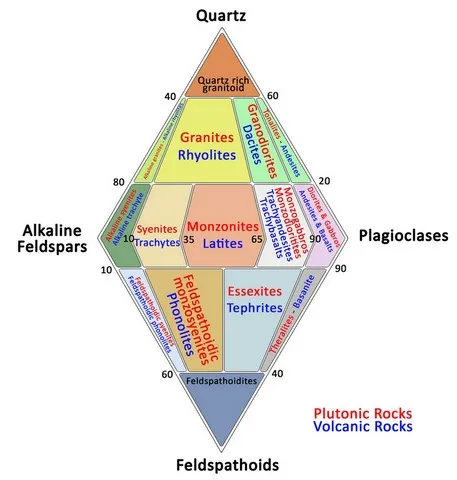What is andesite in geology ?
Andesite : definition
Andesites appear in continental areas : they dominate in the Andes Cordillera (hence their name) and more generally in subduction zones, vast geodynamic areas where an oceanic plate sinks under a continental plate. These movements cause the local fusion of the rocks, giving the magmas, which will then either go up to the surface to spread there in the form of lava (volcanism), or remain blocked within the crust where they solidify to form large granitic batholiths (plutonism).
The passage from basalts to andesites is continuous and the distinction between the two rocks is sometimes delicate. The plutonic equivalent of andesite is diorite.

